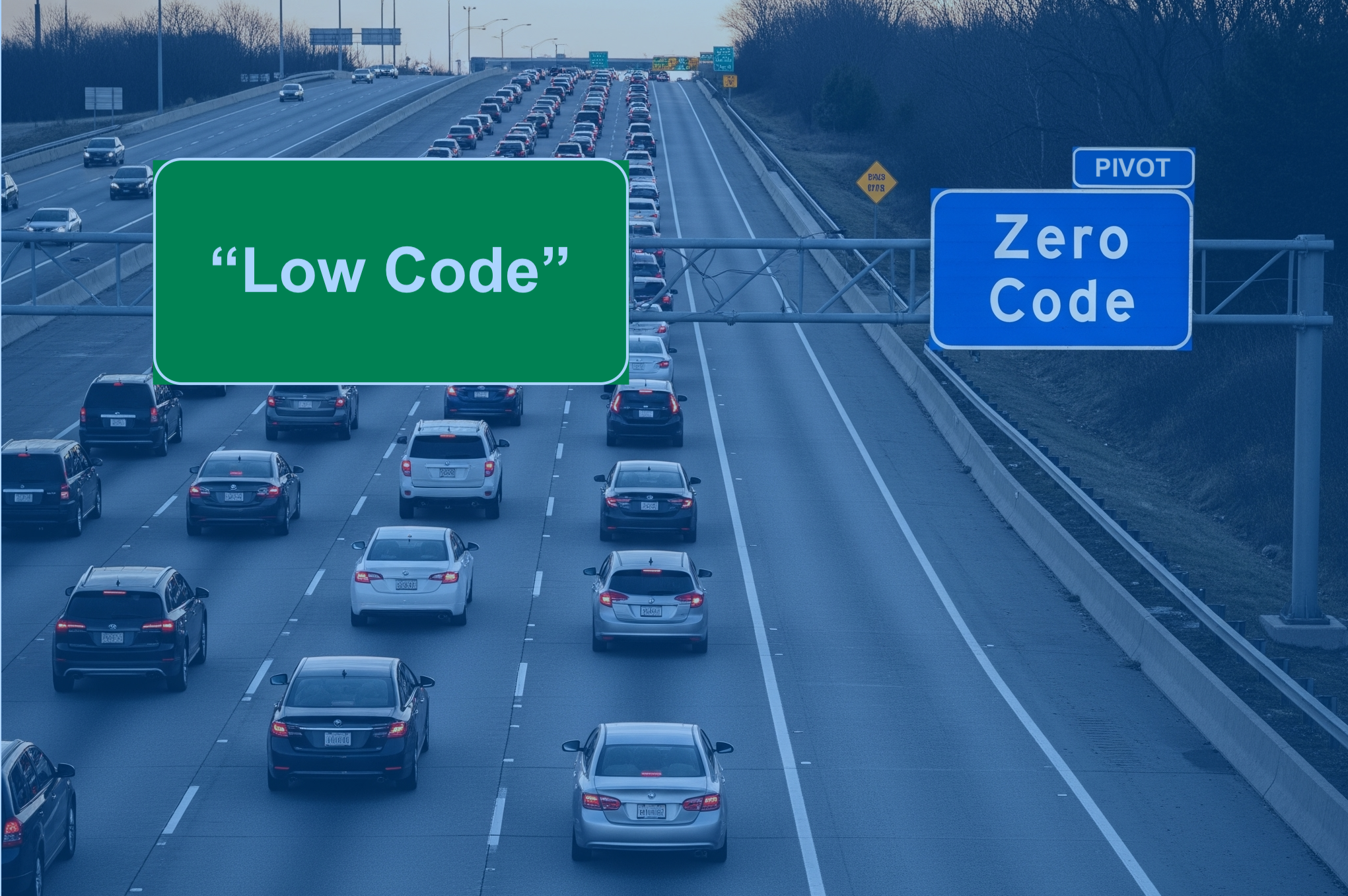Many times software is selected inside one of many silos. Forms are no different. This leads to app sprawl and multiple skill sets required to support them all.
Most companies I have spoken with are using between 4-6 different forms solutions. Why? Because software tends to be selected inside one of many corporate silos and scope gets reduced to the bare minimum without taking into account that this is only the beginning of the journey. Harder/more complex things are usually put off until later, but when later comes, that’s when the trouble begins…
Company A solves one problem at a time: They identify a problem, they look for solutions in the market, they go through an evaluation of several alternatives, they select one, they negotiate contracts, perform a cyber security review, kick off the project, put it in production, go back to the vendor for more modifications because it didn’t work as demoed. Why? Because the demo only covers the things you see on the surface: the pretty stuff, the easy stuff. But we all know that complexity lies below the surface – and your business is complex.
How much time does it take your company to do this process once? And you repeat this process for each problem. Again and again.
And then you have to support these various solutions, each with a different tech stack and a different feature set, which may or may not meet your needs in the future.
These usually come in two flavors:
- Forms that come with a pre-packaged line of business app such as work order management, GIS data collection, EHS, and the like.
- Cloud-based forms platforms that were selected by a department and usually do not connect directly to back end systems. Many use either CSV files to transfer data or a 3rd party connector.
The result is that Business Units and IT are faced with multiple solutions that don’t talk to each other. Different skillsets are required to support them all, each with their own learning curve and associated costs.
To further complicate things, most of the tools do not keep up with your desire to digitize additional manual processes because they are limited to either the users of the app, leaving out other process participants, they do not have any workflow, or they cannot handle the complexity that these use cases now present.
Company B took a different approach. They wanted to find an enterprise forms solution that would work across the silos to meet each department’s needs, while reducing the number of solutions and skill sets that need to be supported. They evaluated their solution on the following criteria.
What should you evaluate when looking for a forms solution?Ideally you need a single digital forms platform that can be used to meet all of your use cases within a department and across all departments. This platform must do the following:
- Handle the hardest, most complicated use cases, not just the easy ones.
Nobody’s business consists only of the simple cases – the complex ones are where the gotchas hide. You need to cover all of your use cases, not just the ones that the proposed vendor can cover. Remember, they will sell you on what they have. The “what you need” is up to you to define upfront. The harder/more complex use cases will tell you more about whether this solution is right for you. - Be usable by non-technical, business resources with NO CODING.
Notice that I didn’t say LOW-CODE. I have reviewed over 20 forms solutions on the market today and every one of them requires some type of coding, usually JavaScript, in order to implement all of the required functionality. Obviously this is a big problem as the business must be dependent on someone to do this coding, adding to the overall cost and the delays to schedule resources. - Run on a browser on a desktop, and/or on a mobile app on a tablet or phone, and/or embedded within other apps and/or deep link to other apps – both IN and OUT of coverage.
In order to create the best user experience, the same form must run in any of these – that way the form is presented in the same manner that the user is working – if they are using a mobile tablet in the field, or if they are a supervisor at their desk or an operator using a kiosk on the plant floor. - Route forms with Intelligent Workflow
Workflow routes forms to other departments or vendors, increasing productivity with fewer manual processes and re-keying of data. Workflow is a key feature to digitize your business processes, yet most solutions today do not have any!! - Update SAP and other systems in real-time at the point of activity.
Interfacing into your backend systems must be seamless, scalable, and robust so that you don’t spend time monitoring and correcting errors. Transactional interfaces are better than a database synchronization interface in that they are highly scalable and less error-prone due to their real-time nature. - Fit into customer’s IT landscape and security guidelines.
Your IT department has high standards for scalability, security, and data governance. The solution you select must meet these standards. Cloud solutions should be single tenant and provide a Dev, QA, and Production environment. SOC-02 certification is a must.
Think Strategically, Act TacticallyAnalyze your current business processes and most likely you will find that your needs extend beyond those of the proposed point solutions that you are evaluating.
Don’t let your project be down-scoped to only cover the simple use cases. While you may implement forms in phases, starting with the easy one, you need to make sure the tool you use can easily handle the most complex – otherwise you paint yourself into a corner.
ConclusionThe fragmented approach of implementing multiple forms solutions within a company creates too many challenges and inefficiencies that could be avoided with a comprehensive forms solution. To address these challenges, it is essential to evaluate and adopt a comprehensive digital forms platform that can meet all use cases across departments.
When selecting a Forms Solution, it is crucial to think strategically and consider the long-term needs of the business. Avoid down-scoping projects to cover only simple use cases and ensure the chosen tool can handle complexity effectively. By taking a holistic approach and implementing a robust forms platform, companies can overcome silos, streamline processes, reduce costs, and future-proof their digital transformation efforts.
Take a deep look at Mirata. Our no-code platform can do all of the above and proves that it is possible to tackle a variety of forms ranging from simple to complex. You don’t need to settle for choosing between a business app or a cloud-based platform with our embedded capabilities. Your company should be spending valuable time and money trying to solve the same problem over and over: At Mirata, we want your Forms Solution to get easier with time.



